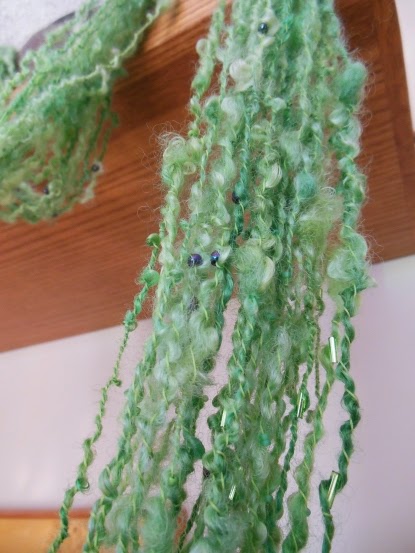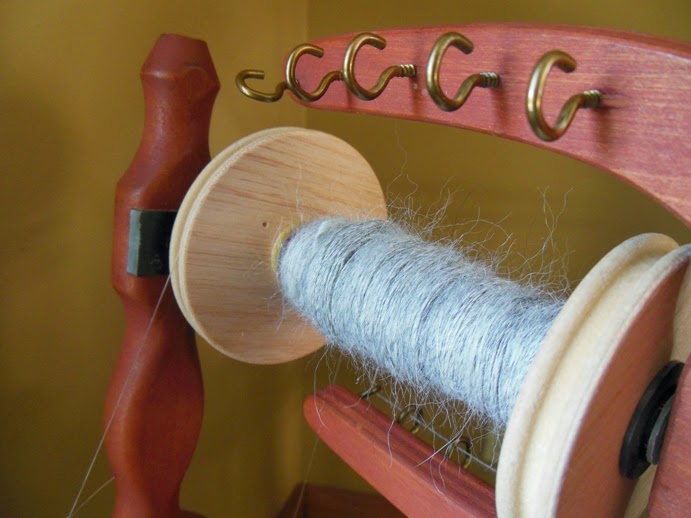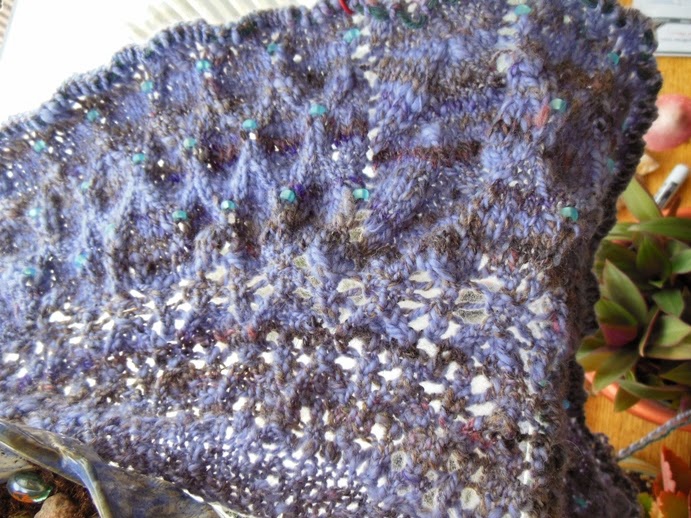In the midst of the lavender batts spinning I snuck in some different fibre.
This was pin-drafted rambouillet-targhee cross. It was certainly a very different fibre and prep from what I am used to.
It spun into an incredibly lofty yarn with a supported long draw. It took a while to figure out how best to spin it and draft it. In the end I have 3 skeins totalling just under 300m of thick and thin averaging a DK/light worsted weight. I'm thinking of doubling it up for a bulky cowl.
Then I moved on to my first beaded art yarn.
Oh boy, I did not love the beading part. Spinning the BFL locks was a lot of fun and I look forward to finishing the bag of locks - but I won't be beading that yarn.
I now have 67m of beaded yarn to play with.
It took a while to finish plying this yarn because I ran out of beads, decided to measure out how much more beaded thread I needed, then add more beads to the thread, then untangle the thread... but it's done now.
It wasn't long before more fibre found its way onto a bobbin. I was looking to make a particular yarn for a Starry project. I thought it was time to spin my 8oz of silver alpaca-silk.
But the alpaca-silk insisted on being spun much finer than I need for this project. This will be glorious lace yarn. When the single broke I took the opportunity to switch projects on the wheel and transferred the fine singles to a chopstick for later.
NOW I have this amazing BFL from Waterloo Wools on the wheel. It's the closest colourway I had in my stash for the intended project. I'll simply amend my project to be stars over the ocean!
The colourway is Rocky Shores. I almost spun the first half of the 4oz braid in less than 24h. Yep, I'll be knitting in no time!
UPDATE:
Less than 3 days after starting I have about 280m of fingering weight yarn (in 2 skeins)
 |
| 2 bobbins of singles |
 |
| First bobbin of plied yarn |
 |
| Skein 1 drying indoors |
 |
| Skein 2 drying outside in the wind |
 |
| Skein 2 |
 |
| Checking colours together before washing. |























